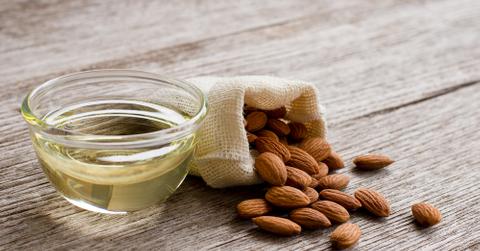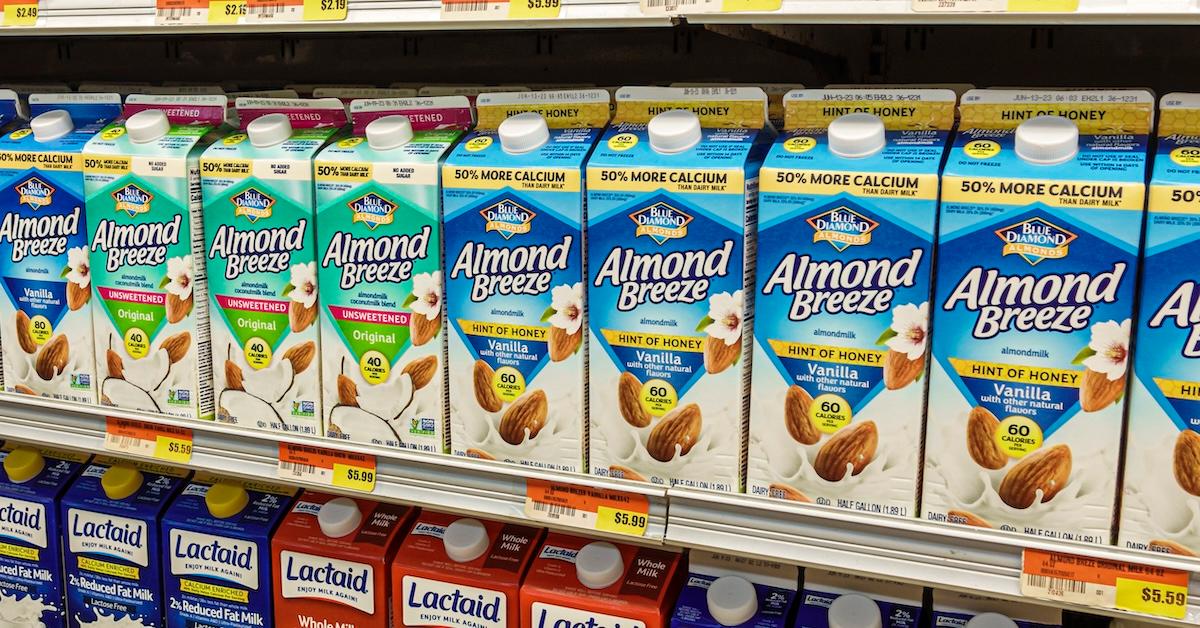Here's How Much Water Almond Trees *Really* Use — Hint: Way Less Than Dairy
Updated June 4 2024, 3:53 p.m. ET

With the rising popularity of nut milks, many are leaving dairy behind as a distant memory. And while all kinds of nut milks are on the market now, one of the most popular is almond. Of course, this is a better option than dairy, as water waste, pollution, and animal abuse runs rampant in the highly corrupt industry. But many argue almond farms waste large amounts of water.
So, to settle the argument, we're investigating: how much water is used to grow just one almond? And how much water does an almond tree need?

How much water does it take to grow a single almond?
You'll be surprised to learn how much water a single almond needs to grow.
According to a 2017 study published to Science Direct, one California almond has an average "water footprint" of 12 liters or 3.2 gallons, which is quite a bit more than you might think, considering how tiny a single almond is.
According to FarmTogether, that statistic is a bit high — the investment company states that it takes 1.1 gallons of water to grow each almond. However, the article notes, those 1.1 gallons of water provide much more than just one almond. The water also produce two significant almond byproducts: almond fruit, which are fed to animals and used for alternative energy; and almond shells, which are often upcycled on farms for various uses.
The National Integrated Drought Information System (NIDIS) notes the West Coast state is facing a years-long drought, which is unfortunately heavily exacerbated by the agricultural industry.
For 376 weeks, California was in the midst of a megadrought from 2011 to 2019. And since different almond milk brands use any number of almonds, mostly from California, the impact can be damaging to the Golden State.
How much water does an almond tree need?
According to the University of California, Agriculture and Natural Resources, almond trees spaced out normally in California typically use around 41 to 44 inches of water per year. In certain orchards, for instance, those where the trees grow closer together, almond trees use more like 50 to 54 inches of water per year.
You could also say that it takes around 370 liters of water to produce 1 liter of almond milk, per Sentient Media.
However, this doesn't even compare to how much water the dairy industry wastes. From supplying cows with water, to using water to produce feed for the cattle, the dairy industry ultimately wastes quite a bit more water than the almond industry — keep reading for more on how almond milk compares to dairy milk, in terms of water waste.
Almond milk vs cow's milk: Dairy milk is far more wasteful and harmful to the world.
Although almond milk does have its drawbacks, the dairy industry wastes incredible amounts of water and harms animals. According to a 2022 study based in Australia, it takes anywhere from 433 to 11,110 liters of water to make just 1 liter of milk. The wide range accounts for the different water quality standards used in various areas, but it certainly shows the dairy industry's impact on water waste, alone.
Again, a liter of almond milk requires about 370 liters of water — so, while high, that is still far less than the water that dairy milk requires.
On top of that, we know from the documentary The End of Medicine (As We Know It) that farm animals are routinely harmed. They are stuffed into confined spaces away from their mothers and pumped full of antibiotics. And because farm animals including cows are crammed into such tight spaces, diseases can spread quickly. When we consume animal byproducts, we are also consuming those antibiotics.
This article, originally published on December 8, 2022, has been updated.